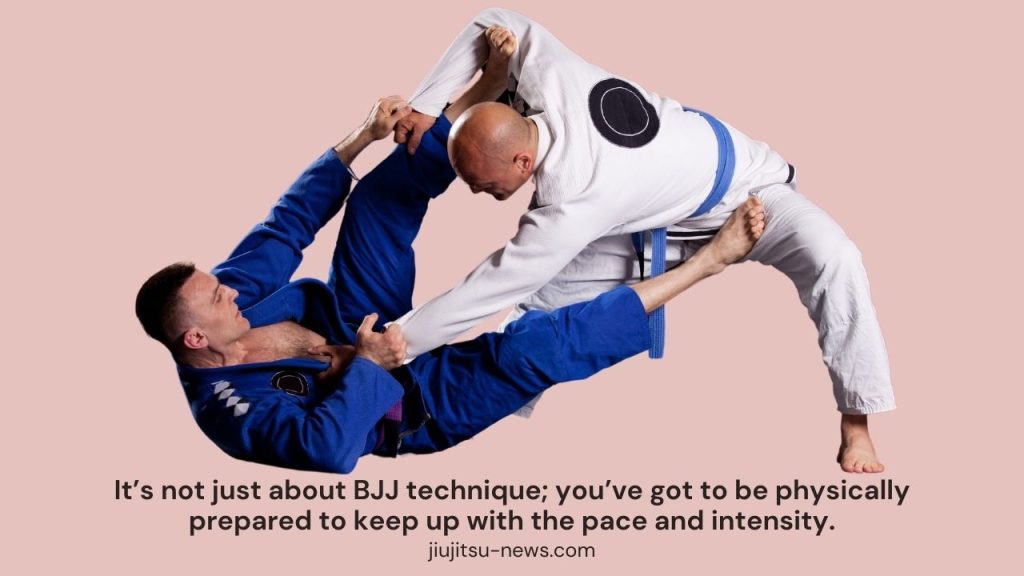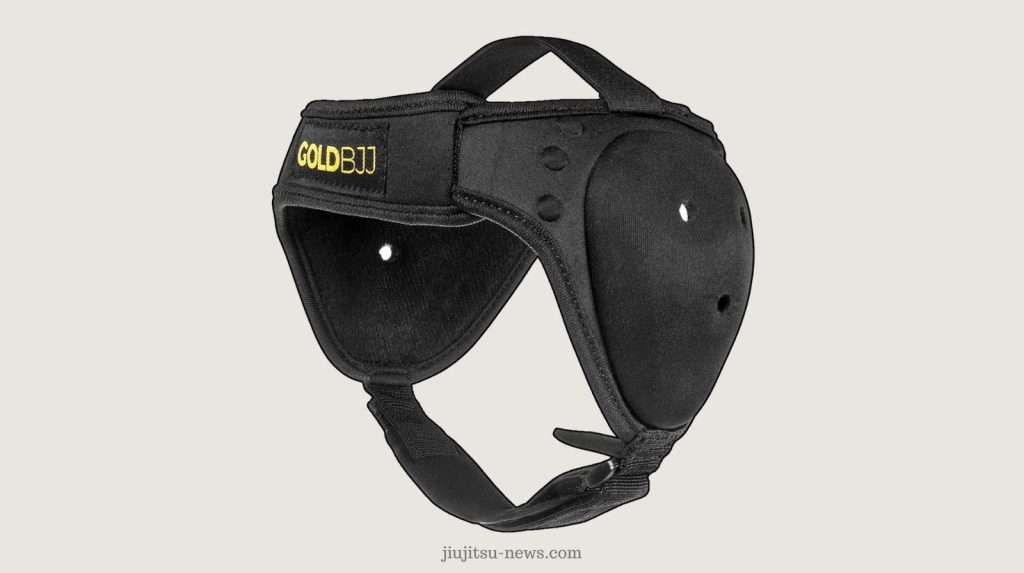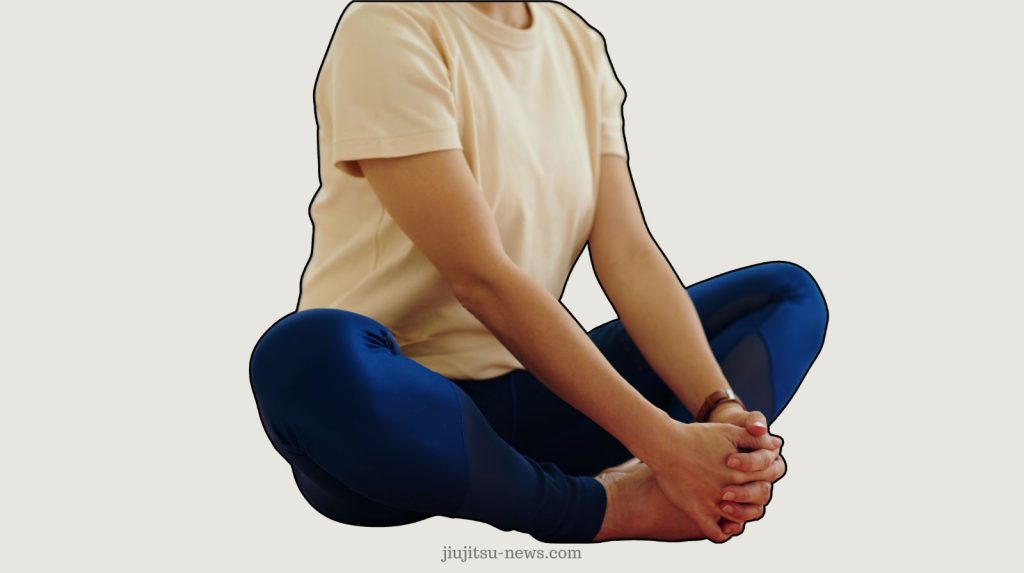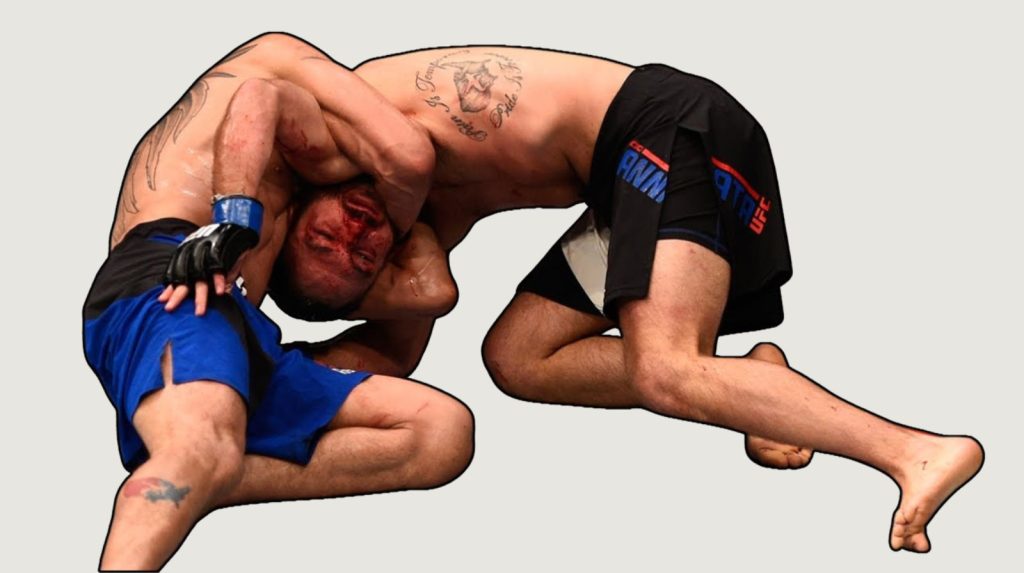If you’re wondering what the best grappling martial arts for a street fight are, here’s the real answer—there isn’t one perfect style. However, some styles offer more practical advantages in street fights than others.
And yeah, we’ll call it what it is: fighting. Not self-defense. Not “real combat systems.” It is simply a matter of engaging in combat. This could occur in a parking lot, on a sidewalk, or in an unexpected location.
What Martial Art Should You Choose?
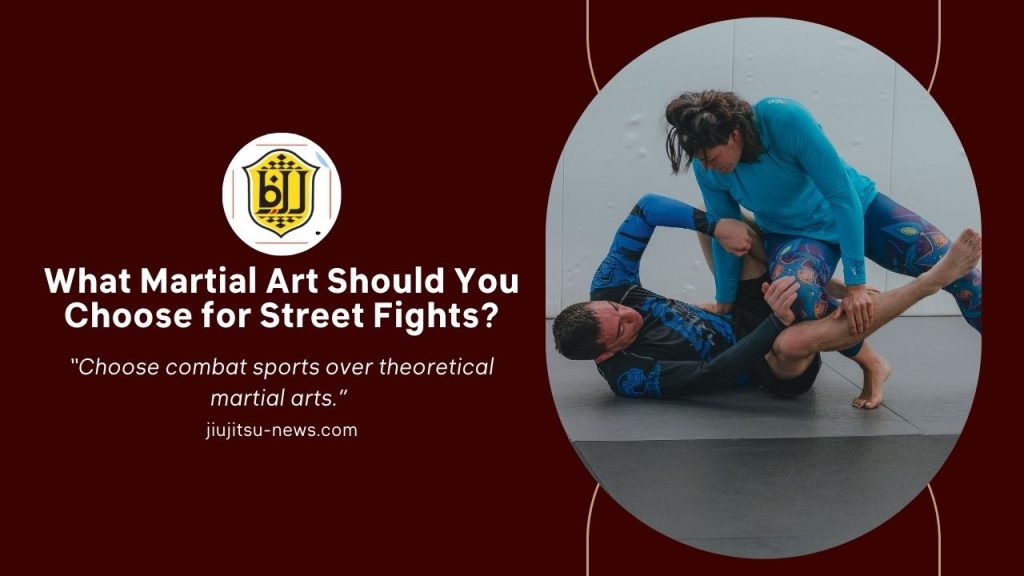
A wise fighter once said: “Choose combat sports over theoretical martial arts.” And he’s absolutely right! Let me break the situation down. There are basically two types of martial arts:
- Combat sports (like Jiu-Jitsu, wrestling, boxing, judo, Muay Thai)
- Theoretical martial arts (like some styles of kung fu, aikido, or anything that avoids live sparring)
If you’re training to protect yourself in a real fight, always go with combat sports. Why? They teach you how to remain calm under pressure. You actually spar. You roll, wrestle, get hit, and figure out what works and what doesn’t—for real
If you only drill techniques on a partner who never resists, you’ll freeze the second a fight gets messy. And trust me, it always gets messy.
What Makes a Martial Art Good for Street Fights?
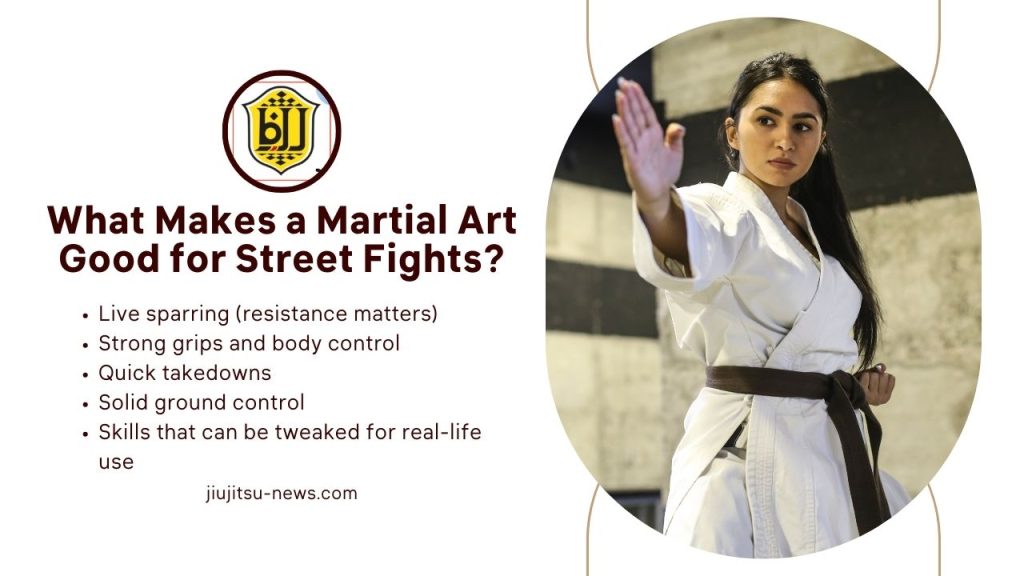
When it comes to protecting yourself in self-defense scenarios, you need a fighting style that assures these things:
- Live sparring (resistance matters)
- Strong grips and body control
- Quick takedowns
- Solid ground control
- Skills that can be tweaked for real-life use
If the art you’re training doesn’t offer those, it’s probably not helping much outside the gym.
What Are the Best Grappling Arts for the Street?
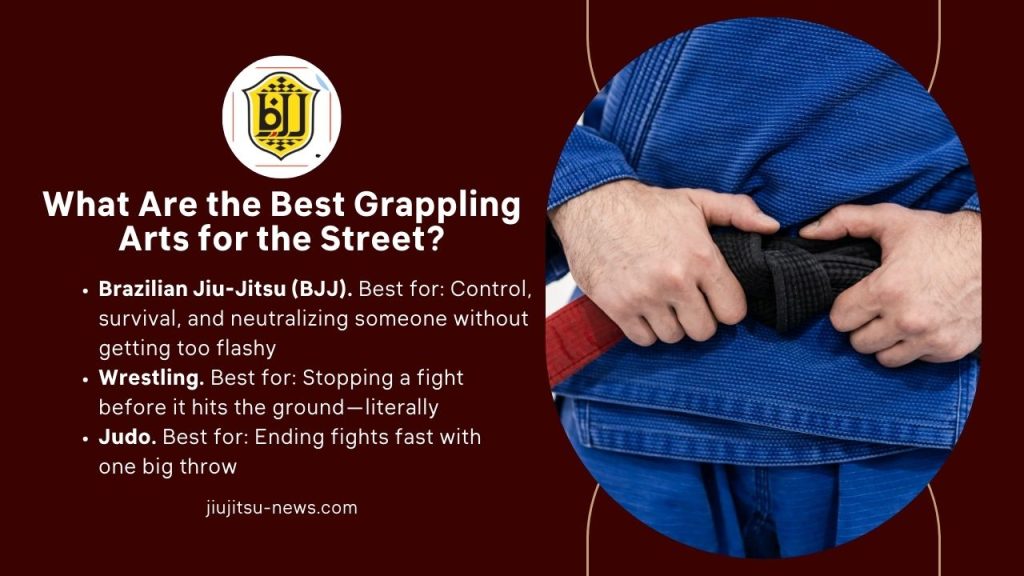
Here’s the short list of the most suitable grappling martial arts for street fights—and why they work:
Brazilian Jiu-Jitsu (BJJ)
- Teaches you how to stay calm when you’re on your back
- Helps you control people without throwing strikes
- Submissions let you end fights without throwing punches (less legal trouble)
- Trains you to fight from bad positions—this is huge on the street
✅ Best for: Control, survival, and neutralizing someone without getting too flashy
Wrestling
- Explosive takedowns
- Dominant top control
- Great for slamming someone who’s getting aggressive
- Builds insane balance and physical strength
✅ Best for: Stopping a fight before it hits the ground—literally
Judo
- Teaches you how to throw someone hard
- Uses their momentum against them
- Can help you stay standing (important in a street fight)
- Works well in tight spaces (like alleys or crowded areas)
✅ Best for: Ending fights fast with one big throw
“But What About Striking?”
Striking arts like boxing or Muay Thai are also super useful—but if we’re just talking grappling here, you still want a base that includes real contact, timing, and conditioning.
Still, knowing how to punch, elbow, or knee someone is a big bonus. Just know: if you throw a bare-knuckle punch in a street fight, you might break your hand. Even Mike Tyson broke his hand in a real-life street fight. No joke.
So many experienced fighters switch to open-hand slaps, elbows, or clinch work if they’re fighting outside the ring.
Want Real Street-Fight Skills? Modify What You Learn
Here’s where most people get it wrong. They pick a martial art, train hard, and assume it’ll work the same way on the street. However, the rules change outside the gym.
- No gloves
- Hard surfaces (concrete, not mats)
- Maybe multiple attackers
- Weapons? Could be
- No referee to stop things when it gets bad
So yeah—modify your game.
For example:
- A boxer should train open-hand strikes or elbows.
- A BJJ player should focus on getting back up, not just playing guard.
- A wrestler should learn how to control without slamming heads on the concrete.
Final Advice: Train Live. Stay Sharp. Think tactically.
You don’t need a dozen martial arts. Pick one or two good combat sports, train hard, and then ask, “How can I tweak these techniques for a real fight?”
That mindset—combined with live sparring and honest self-checks—is what’ll actually help you stay safe in the real world.
💡 Read Next: The Only Jiu-Jitsu Hydration Guide You’ll Ever Need! 👉 Click here to read the story
Reference: Lex Clips


